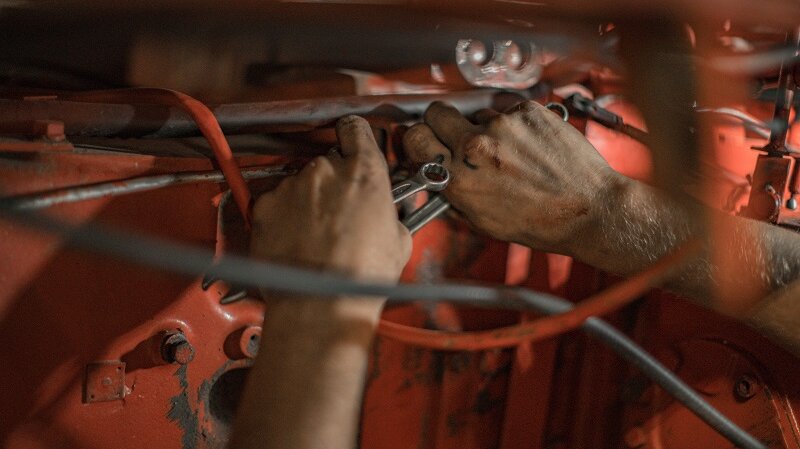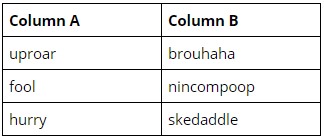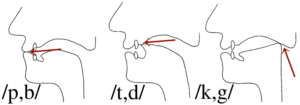Paint a Funnier Picture (Even If You Can’t Draw a Cartoon of a Stick Man)
Episode #3 of the course Humor boosters: Lighten and tighten your writing by Gay Merrill
Last lesson you learned about observational humor using comedian Brian Regan as a source of inspiration. Did you jot down notes about events in your daily life that have humor potential? You’ll use your writing sample today for the exercise. You can also use a piece of writing you already have.
This lesson looks at how to give your writing more flare. One way to paint a funnier picture is to choose super-specific words. Create a vivid description by swapping vague words for concrete ones.
Consider this sentence:
“The woman took her car to the garage for repairs.”
Bland, right?
We can spice up this sentence by asking some questions. How old is the woman? What type of car does she drive? What’s the name of her garage? What type of repair did her car need?
In the following table, I’ve noted the nouns in my sentence example to demonstrate how to go from vague to super-specific. You can add verbs to the table as well.
In my super-specific column, I chose specific words that are reported to be funnier. So with these details, I might edit my sentence to become…
“Celeste’s granny took her 2013 Ford Fiesta Hatchback to her auto repair shop to fix the rattle caused by loose lug nuts.”
That new version gives a better picture but doesn’t seem funny. I can add more detail to create a mini-story. I ask myself, “What might have happened to her car?” My next rewrite becomes…
“While driving to visit her granddaughter, Erma’s mini sedan ran into a beaver crossing the road. After the collision, she noticed a strange rattling noise, and knew she needed to visit Grease Monkey Mechanics to have it checked.”
I like my second version a bit more. (The beaver is a Canadian touch.) One more round of additions and edits and my next version becomes…
“Celeste’s granny, Erma, drove her 2013 Fiesta hatchback to her favorite auto repair shop. The car had been sounding strange ever since her highway altercation with the beaver. She knew if Grease Monkey Mechanics couldn’t silence her rattling lug nuts, nobody could.”
The funny part for me in this third version comes in the last sentence with the phrase “silence her rattling lug nuts” because it contains innuendo suggesting Celeste herself might have rattling lug nuts. And as you’ll learn in a moment, lug nuts are funny.
This example remake shows you how brainstorming and trial-and-error are part of the comedic process. The method I’ve shown gives you an easy way to start the brainstorming process. Then, to transform a piece of writing, try several variations until you find a funnier version.
How to Choose Funnier Words
According to linguistics experts (even linguistics has humor experts), words containing these letters are funnier: B, D, G, K, P, and T.
Now for a skill-testing question…
Which column of words is funnier? Say the word and listen for its humorous effect.
The words in column B come from The 100 Funniest Words in English by Dr. Robert Beard, a Linguistics expert. Dr. Beard, also known as Dr. Goodword, spent 40 years of scientific research in the workings of words.
Fun fact: The sounds made by the consonants B, D, G, K, P, and T are called plosives and make the funniest sounds in the English language. A plosive (for anyone who cares) is a phonetic term, also known as a stop, for a consonant that blocks the vocal tract. The sound made by the blockage varies depending on which part of the mouth you use.
Funnier Numbers
Odd numbers are funnier than even numbers. (I have no explanation for this other than it’s what I read in 37 sources. Comedians and humorists will attest to this fact.)
Putting your animal preference aside, which sounds funnier: 13 stray dogs or six feral cats?
Large numbers that end in 9 catch the reader’s attention faster. Do you want to read about a person who ate eight cheese puffs or a kid who devoured 579 Skittles? (tough choice since Skittles and cheese puffs are both funny).
Note: In the rewrite of my example, I chose a 2013 (odd number) Ford Fiesta Hatchback (contains letters B, D, K, and T.)
Paint a funnier picture by choosing specific words and funnier words and numbers. Remember Celeste’s granny and her loose lug nuts.
Exercise
1. Find a funnier choice for these words:
• Bad: ___________
• Yellow: ___________
• Surprise (verb): ___________
• Twenty: ___________
• Animal: ___________
2. Review the piece of writing you did in Lesson 2 on observational humor. Choose one of your sentences that contains any nouns and verbs which are vague. Rewrite your sentence to use super-specific words. Try doing a few rewrites to come up with a funnier version.
Next lesson you’ll learn about the kid who ate 579 Skittles (just kidding). Stay tuned for the comedian’s key tool and how to apply it to your writing.
Recommended reading
Definition and Examples of Vagueness in Language
Recommended book
Share with friends




